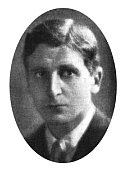Name Michael Sadleir Movies Fanny by Gaslight | Parents Michael Sadler Role Novelist | |
 | ||
People also search for Michael Sadler, Anthony Asquith, Doreen Montgomery Books Fanny by Gaslight, Northanger Horrid Novels, Trollope, Passages from the autobiogr, Bulwer and his wife | ||
Nominations Nobel Prize in Literature | ||
Michael Sadleir (25 December 1888 – 13 December 1957) was a British publisher, novelist, book collector and bibliographer.

Biography
Michael Sadleir was born in Oxford, the son of Sir Michael Ernest Sadler and Mary Ann Harvey. He later adopted the older variant of his surname to differentiate himself from his father, a historian, educationist, and Vice-Chancellor of the University of Leeds. The name change was precipitated by the scandal that followed the publication of Sadleir's novel Fanny by Gaslight, with some of the ensuing abuse being mistakenly directed at Sadleir's father.
Sadleir was educated at Rugby School and was a contemporary of Rupert Brooke and Geoffrey Keynes. He then attended Balliol College, Oxford, where he read history and won the 1912 Stanhope prize. Before the First World War, Sadleir and his father were keen collectors of contemporary art, and purchased works by young English artists such as Stanley Spencer and Mark Gertler. They were amongst the first collectors (and certainly the first English collectors) of the paintings of the Russian-born German Expressionist artist Wassily Kandinsky. In 1913, both Sadleir and his father travelled to Germany to meet Kandinsky in Munich. This visit led to Sadleir translating into English Kandinsky's seminal written work on expressionism, Concerning the Spiritual In Art in 1914. This was one of the first coherent arguments for abstract art in the English language and its effects were profound. Extracts from it were published in the Vorticist literary magazine BLAST in 1914, and it had a major impact on the development of abstract art in Britain and North America right up until the 1960s. Sadleir's translation is still in print, and it remains one of the most commonly used versions of Kandinsky's book in the English language.
Sadleir began to work for the publishing firm of Constable & Robinson in 1912, becoming a director in 1920, and chairman in 1954. In 1920 as editor of Bliss and Other Stories by Katherine Mansfield for Constable he insisted on censoring sections of her short story Je ne parle pas français which show the cynical attitudes to love and sex of the narrator. Her husband John Middleton Murry persuaded Sadlier to reduce the cuts slightly (Murry and Sadleir had founded the avante garde quarterly Rhythm in 1912)
After the end of World War I, he served as a British delegate to the Paris Peace Conference, 1919, and worked at the secretariat of the newly formed League of Nations. He was a novelist, a bibliographer, and a book collector. As collector and literary historian, he specialized in 19th century English fiction, notably the work of Anthony Trollope. Together with Ian Fleming and others, Sadleir was a director and contributor to The Book Handbook, later renamed The Book Collector, published by Queen Anne Press. He also conducted research on Gothic fiction and discovered rare original editions of the Northanger Horrid Novels mentioned in the novel Northanger Abbey by Jane Austen. Beforehand, some of these books, with their lurid titles, were thought to be figments of Austen's imagination. Sadleir and Montague Summers demonstrated that they did really exist. He was President of the Bibliographical Society from 1944 to 1946.
Sadleir's best known novel was Fanny by Gaslight (1940), filmed in 1944, a fictional exploration of prostitution in Victorian London. A later novel, Forlorn Sunset, further explored the characters of the Victorian Underworld. His writings also include a biography of his father, published in 1949, and a privately published memoir of one of his sons, who was killed in World War II.
The remarkable collection compiled by Sadleir Victorian fiction, now at the UCLA Department of Special Collections, is the subject of a catalogue published in 1951. His collection of Gothic fiction is at the Albert and Shirley Small Special Collections Library at the University of Virginia.
Sadleir lived at Througham Court, Bisley, in Gloucestershire, a fine Jacobean farmhouse altered for him by the architect Norman Jewson, c. 1929.
